I threw a picnic in our garden the other day. We were busy with all…
Odd things in an English house
We all know that England is a quirky place. There is the left hand traffic, the pound sterling and the funny sockets and plugs and of course the famous two taps on sinks. Perhaps tourists also notice that windows open outwards. But there are even more strange and odd things in an English house. Before I start, I would like to emphasise, that this list is set to show the quirky and cute aspects of living in England from a Hungarian perspective. It is not meant to cause offence, or to be critical of England’s houses. This is what makes England so interesting and a lovely place to live. 🙂
1) Sockets and plugs
Let’s begin with the famous socket and plug! It is called the BS 1363 or G Type circuit system, plugs, socket-outlets, connection units and adaptors plug and socket-outlet system which were introduced in 1947 in the United Kingdom. Discussions about a new system started in 1942 and the Electrical Installations Committee of the IEE held 22 meetings between 1942 and 1944 before the decision was made. The study included the whole UK ring final circuit.
Why are the plugs so big?
The plug has three rectangular blades in a triangular pattern and has an incorporated fuse (usually a 3 amps fuse for smaller appliances and a 13 amps one for heavy duty appliances). The ground pin on the plug is longer and the power pins are black. That is plastic insulation. The pins are located in a V form so that there is only one way of connecting it to the socket. Makes sense, doesn’t it?
Why is a switch on the socket?
It is a convenience thing really and makes it possible to unplug your TV without it taking up power. Allegedly, the original reason was to do with arcing. This switch still puzzles me after years…! It still happens that I plug the laptop in and after hours of work the laptop shuts down because I forgot to switch on the socket…!
The G type plug and socket is used – believe it or not – in 50 countries besides the UK. It is used in Ireland, Malta, Cyprus, Malaysia and Hong Kong – just a few to mention.
2) Light switches
Let’s stay with electricity and take a look at light switches. Oh, they always trick me after years! The way to switch the light on the down position – which position is the off position in Hungary (where I am from) and vica-versa. As a result, I often left the light on in the bathroom whilst I thought I switched it off… Having said bathroom… The use or installation of sockets is not allowed in bathrooms unless they can be fitted at least 3 metres from the bath or shower. The only exception to this is a shaver-supply unit. (This is why washing machines are in the kitchen or utility room in the UK.)
Perhaps you also noted in English bathrooms that there is a toilet pull look-alike thing hanging from the ceiling which is in fact a cord pull light switch. 🙂
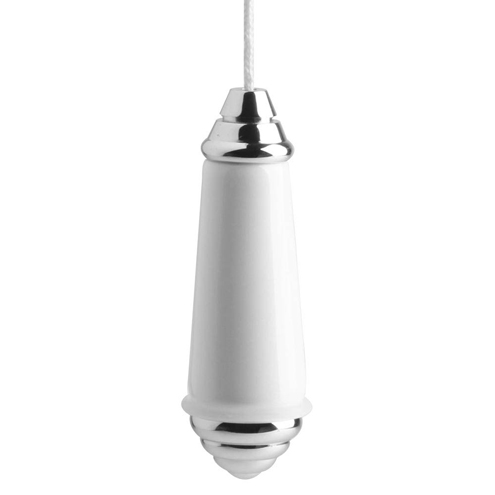
In the bathroom you can only have light pulls. That is the only light switch type that is allowed in the UK because any other switches are considered to be dangerous due to the damp and steam. If you prefer a standard light switch for your bathroom, it has to be outside of the room.
3) Old windows
Old windows open outwards in England which is odd. How can you clean the outside of the window…? It is a struggle all the time! You can’t put them on tilt plus the apportionment is not right either. If for example I had to escape, I could not because I can’t open a window that size which would allow me to get out. Only one wing of the window can be opened, the other one is fixed. I was sort of relieved when Bill said he too disliked English windows with a passion. 🙂
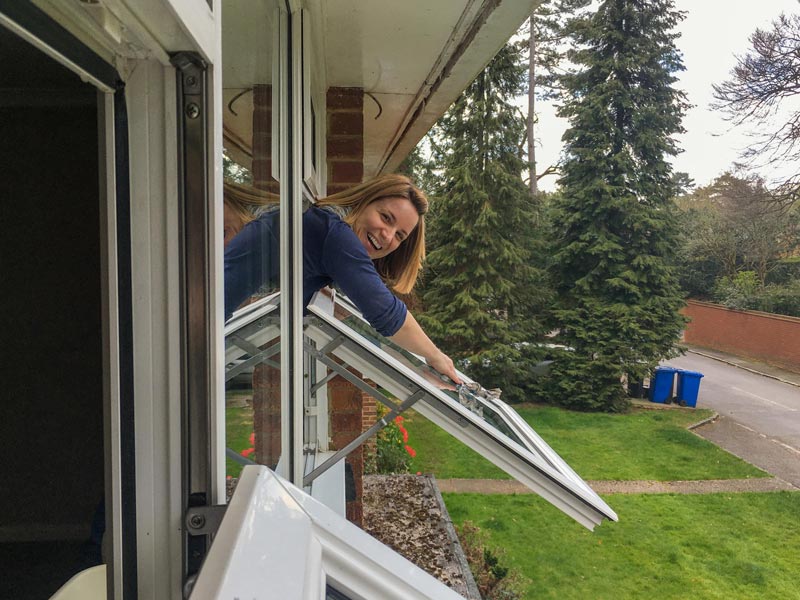
But why do they open outwards?
I have always wondered, why the windows open outwards in this country making window cleaning a nightmare…! ‘Is there any logic or explanation for it?’
Believe it or not, I could hardly find anything about it. The only thing you can read on the internet is that ‘European windows opened inward so that shutters could be closed at night but the windows kept open. The shutters also protect against severe weather.
Outward opening windows are more watertight as the hinged casement is smaller than the frame it closes against, forming an upstand against water finding its way between the frame and the casement.
Inward opening windows get round this by use of gaskets and seals like a fridge door plus concealed channels to remove water that gets in. The problem here is that if water does not escape it just sits there and during freezing weather can then freeze the window shut or tear the seal if its forced. And if it happens repeatedly, the frame will be more prone to rot as the water sitting against the seal starts to find its way into the timber.’
Another aspect for the English is that they use the window sills for keeping photos and ornaments there which would not be possible in the case of inward opening windows… Also, rooms being tiny in Old England, they did not want windows to take up much space in the room. All logical, isn’t it?
4) Meters
In my home country, Hungary we have meters in the apartment or in the corridors. In case of a detached house it could be on the outside wall of the house either covered or uncovered. In England gas meters are on the front of the houses in little wooden boxes and the top can be opened. They look like miniature bee hives… To me this is a rather odd place for meters, but obviously people are not concerned about strangers having access to meters, vandalism or misuse which we all are in Hungary.
5) Post box at home
There is no postbox (in rural areas only), however if you want one, you can buy one and fix it on the wall of your house or on your fence. But generally speaking there is an aperture on the front door only and that’s it. I do not really see the point of this, as when you come home and open the door, you cannot really avoid stepping on letters. Now can you imagine what it causes if it is raining heavily and your shoes are dirty! But not only that, when I was on my own in the cottage and heard steps on the gravel approaching the house and then noise coming from the door, honestly, I got a heart attack as I thought somebody want to get into the house! Of course, it was the postman only delivering letters… How can you get used to this…?
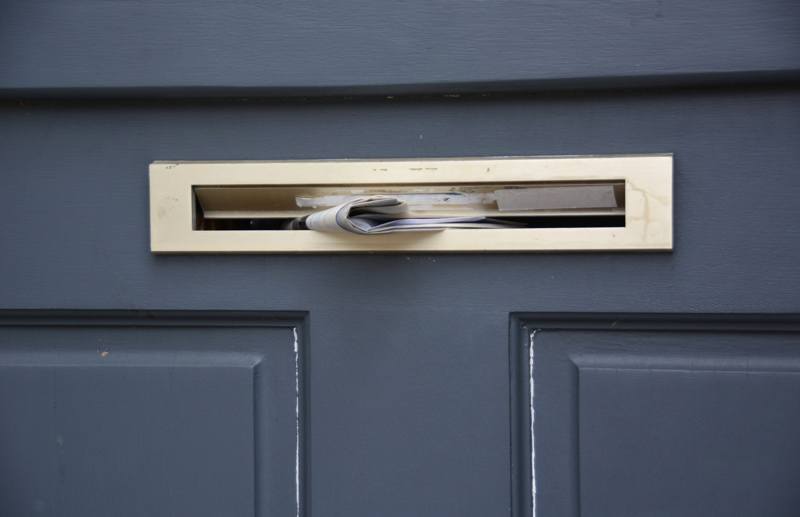
6) Lock
The only locks I have come across in my entire life worked clockwise, meaning the barrel turned clockwise when opening it. Over here, it works anticlockwise to open. I have been living here for years now and it still confuses me sometimes!
7) Taps
Oh the good old English taps…! They have two of them on the sinks or at least there used to be two. Today mixer taps are preferred.
But why did they have two of them?
Mainly because the hot and cold water were kept separately in households. Cold water came straight from supplies whereas hot water was stored in a tank in the loft. The boilers could be rusty and contaminate the drinking water if the two systems were linked.
How could they wash their hands properly with scolding hot water coming from one tap and ice cold from the other one?
The answer is simpler than you would think. Habits were different those days and they used a plug!
Alright but on which side was the hot and the cold tap?
Perhaps you noticed that hot taps are always on the left side. This is because a code of practice in 1965 advised that hot taps should be on the left so that the visually impaired would always know on which side the hot tap is. Why on the left? People used more cold water and the majority of the population being right handed, it just seemed right to have the cold on the right.
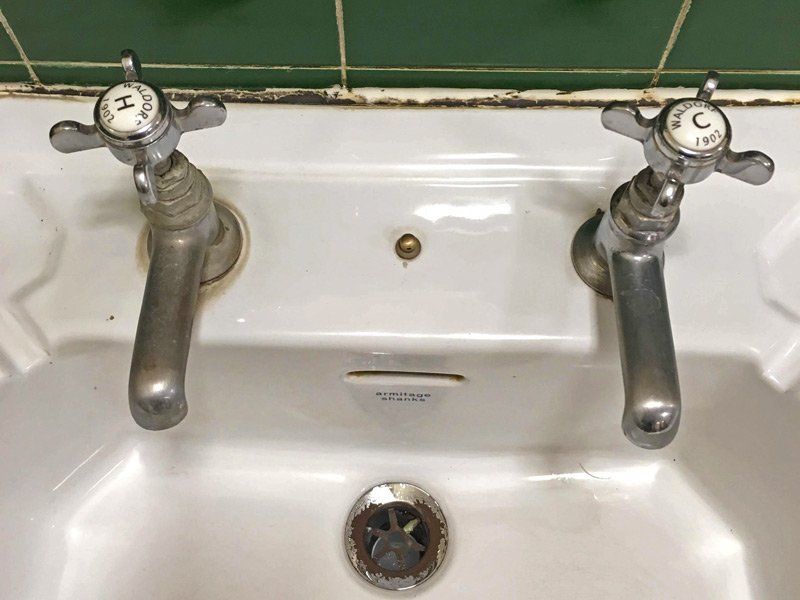
8) Sewage pipe on the outside of the house
I am not sure if you have noticed but indeed sewer pipes are running on the outside of the houses in England. For people from the continent this might look bizarre… Not only because it makes us think how it could feel like when these pipes break or leak above your patio for example but also because these black painted pipes do not look very aesthetic on buildings.
The reason why the English have these pipes on the outside is simple: this seems to be a practical solution should there be a problem. In this way you do not have to open up the internal walls. Besides, this is a cheaper solution and as it is hardly ever freezes in the winter in the UK, seems to be a safe solution, too. Almost… Some say they did have a frozen sewage pipe in the winter of 1987 and they had to throw a bucket of hot water to the pipe. It worked, so it is indeed practical. Whereas should there be a frozen pipe on the continent where pipes are running inside the wall, then the you are in bigger trouble and the walls have to be opened…
I understand… Thanks God I have never had a situation where the sewage pipe would have run above my head. I am not sure what I would have made out of the sound of dripping and the fact I knew what was dripping down the pipe… Can one get used to this…? Surely…
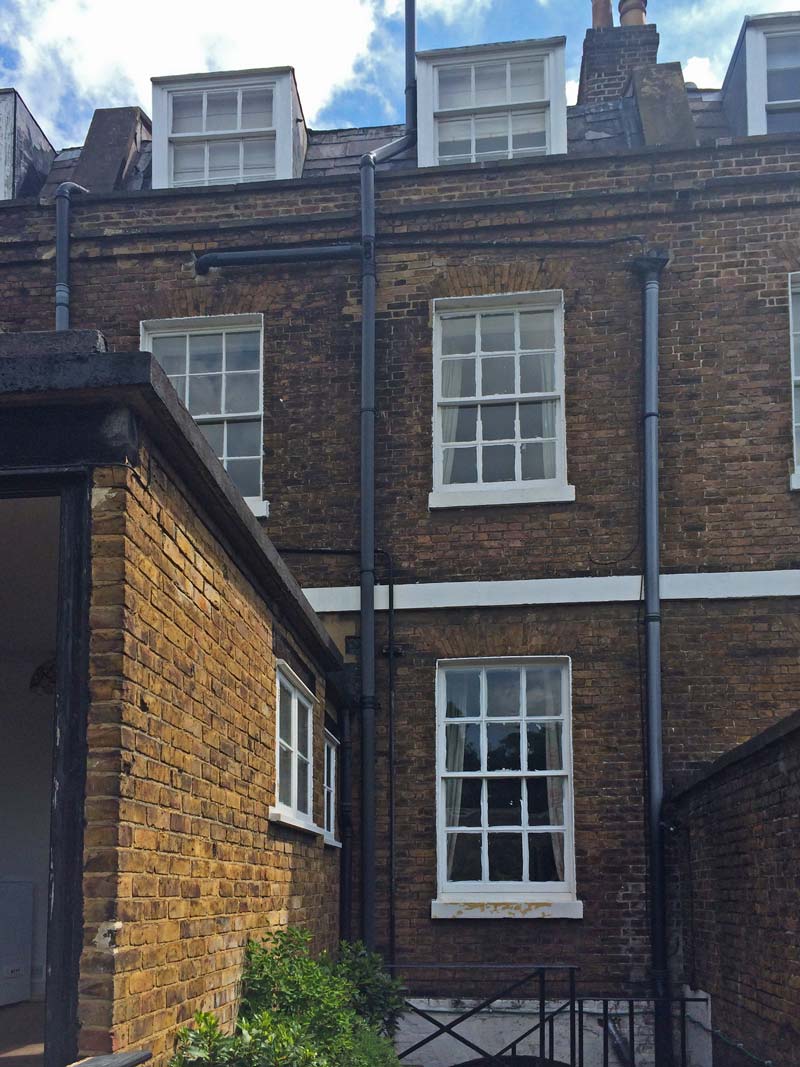
9) Two doors rule
Last but not least a rule which I was made aware of when we started to refurbish the house. The layout was the following: from the kitchen you could only get to the living room and had no access to the bathroom or the bedrooms. In order to get to the bathroom or bedrooms, you had to go through the living room. How odd? We were explaining this to Bill’s friends on a New Years Eve-party when we were talking and one of his friends said the house was probably built when the two doors regulation was still in place.
Two doors regulation? Never heard of it…
This is in fact a hygiene thing which did not allow the kitchen and the bathroom having only one door between them. This probably dates back when there were no sinks in toilets and you could not wash your hands straight away. In our case the toilet is in the bathroom, so washing your hands was safe, yet the kitchen was separated with a wall. Luckily this regulation is no longer required.
~
Well that is all for now but I am sure those of you who already refurbished or observed an English house could tell more stories…
Anything else you would add to the list?

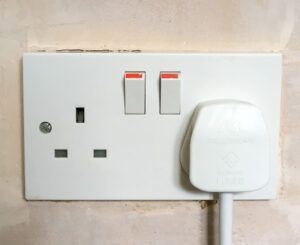
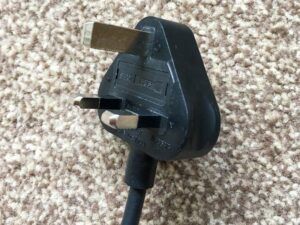



Comments (0)